Original research articles
reviews
Letter to the Edıtor
Issue Reviewers

 0000-0002-7132-1325
0000-0002-7132-1325

 0000-0003-2546-7048
0000-0003-2546-7048
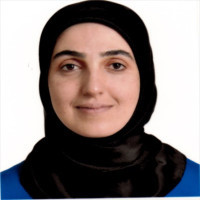
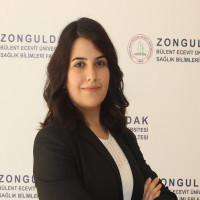
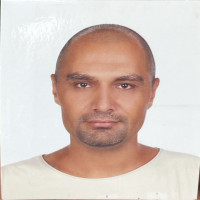
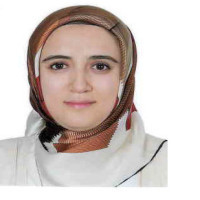
 0000-0003-4333-4484
0000-0003-4333-4484
 0000-0001-8326-9504
0000-0001-8326-9504
 0000-0002-2436-8948
0000-0002-2436-8948

 0000-0002-1774-1222
0000-0002-1774-1222


 0000-0003-0550-3195
0000-0003-0550-3195

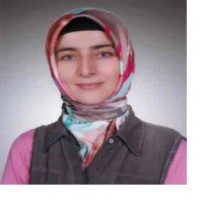





 0000-0002-4025-4537
0000-0002-4025-4537

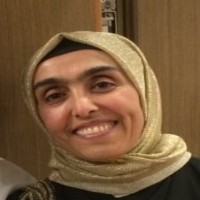
 0000-0002-9284-5486
0000-0002-9284-5486


 0000-0002-7266-2017
0000-0002-7266-2017



Aim & Scope
Health Academy Kastamonu covers clinical and experimental original articles, reviews, case reports, video recordings, image designs and studies on multidisciplinary fields related to medicine, social and health sciences. The aim of the journal is to publish articles related to medicine, health sciences and social fields that concern health, as well as to provide an environment for different publications such as video recording/health-related artistic designs, in addition to articles, where multidisciplinary studies related to health can be published. In the articles it publishes, the journal seeks to comply with the relevant ethical rules and scientific standards, and not to have commercial concerns. The journal aims to complete the processes of the submitted articles as soon as possible, regardless of the number of articles waiting for publication.
In the journal
Emergency Medicine, Forensic Medicine, Oral, Facial and Maxillofacial Surgery, Family Medicine, Algology, Anatomy, Anesthesiology and Reanimation, Military Health Services, Neurosurgery, Biophysics, Biostatistics, Pediatric Emergency, Pediatric Endocrinology, Pediatric Infection Diseases, Pediatric Gastroenterology, Pediatric Genetic Diseases, Pediatric Chest Diseases, Pediatric Hematology and Oncology, Pediatric Immunology and Allergy Diseases, Pediatric Cardiology, Pediatric Metabolic Diseases, Pediatric Nephrology, Pediatric Neurology, Pediatric Rheumatology, Pediatric Health and Diseases, Pediatric Intensive Care, Neonatology , Pediatric Surgery, Pediatric Urology, Child and Adolescent Mental Health and Diseases, Skin and Venereal Diseases, Hand Surgery,
Infectious Diseases and Clinical Microbiology, Physical Medicine and Rehabilitation, Physiology, General Surgery, Surgical Oncology, Gastroenterology Surgery, General Surgery, Warfare Surgery, Thoracic Surgery, Chest Diseases, Ophthalmology, Aeronautics, Histology and Embryology, Internal Medicine, Endocrinology and Metabolism Diseases, Gastroenterology, Geriatrics, Hematology, Internal Medicine, Nephrology, Medical Oncology, Immunology and Allergy Diseases, Occupational and Occupational Diseases, Gynecology and Obstetrics, Gynecological Oncology Surgery, Gynecology and Obstetrics,
Perinatology, Cardiovascular Surgery, Cardiology, Otorhinolaryngology, Neurology, Nuclear Medicine, Orthopedics and Traumatology, Plastic, Reconstructive and Aesthetic Surgery, Radiation Oncology, Radiology, Rheumatology, Mental Health and Diseases, Military Psychiatry, Mental Health and Diseases, Sports Medicine, Underwater Medicine and Hyperbaric Medicine, Basic Immunology, Medical Biochemistry, Medical Biology, Medical Ecology and Hydroclimatology, Medical Pharmacology, Medical Genetics, Medical Microbiology, Bacteriology, Medical Mycology, Medical Microbiology, Medical Parasitology, Medical Virology, Medical Pathology, Medicine Education, History of Medicine and Ethics, Urology, Intensive Care, Oral and Maxillofacial Surgery, Oral, Dental and Maxillofacial Radiology, Pediatric Dentistry, Endodontics, Orthodontics, Periodontology, Prosthetic Dentistry, Restorative Dentistry, Fertilization and Artificial Insemination, Animal Nutrition and Nutritional Diseases, Animal Health Economics and Management, Veterinary Anatomy, Veterinary Biochemistry, Veterinary Surgery , Veterinary Obstetrics and Gynecology, Veterinary Pharmacology and Toxicology, Veterinary Physiology, Veterinary Food Hygiene and Technology, Veterinary History and Ethics, Veterinary Histology and Embryology, Veterinary Internal Medicine, Veterinary Microbiology, Veterinary Parasitology, Veterinary Parasitology, Veterinary Genetics and Biostatistics, Pharmaceutical Biochemistry, Pharmacy Management, Analytical Chemistry in Pharmacy, Pharmacognosy, Pharmacology, Pharmaceutical Biotechnology, Pharmaceutical Botany, Pharmaceutical Chemistry, Pharmaceutical Microbiology, Pharmaceutical Technology, Pharmaceutical Toxicology, Clinical Pharmacy, Radiopharmacy, Pediatric Nursing, Internal Medicine Nursing Obstetrics and Gynecology Nursing, Public Health Nursing, Nursing Education, Nursing Fundamentals, Nursing Management, Psychiatric Nursing, Midwifery, Nutrition and Dietetics, Speech and Language Therapy, Occupational Therapy, Physiopathology, Physiotherapy and R in the fields of rehabilitation, Audiology, Neuroscience, Toxicology, CBRN (Chemical, Biological, Radiological, Nuclear), Health Informatics, Health Economics, Health Physics, Health Management
Original researches, review articles, case reports, video recordings and artistic works are published. Health Academy Kastamonu aims to be a journal where multidisciplinary studies can be published in the intersection of medicine, health and social sciences, and also includes articles specific to disciplines. Submitted scientific articles should not have been published anywhere before and should not be under review in another journal for publication. Scientific articles that are not prepared in accordance with the publication rules are not taken into consideration.
The reporting guidelines approved by the journal are listed below:
- Observational, cohort, case-control and cross-sectional studies: STROBE (http://www.strobe-statement.org/)
- Qualitative studies: COREQ http://cdn.elsevier.com/promis_misc/ISSM_COREQ_Checklist.pdf
- Quasi-experimental/non-randomized trials: TREND https://www.cdc.gov/trendstatement/index.html
- Randomized (and semi-randomized) controlled trials: CONSORT( http://www.consort-statement.org/Media/Default/Downloads/Translations/Turkish_tr/Turkish%20CONSORT%20Statement.pdf
- Diagnostic Accuracy-Assessment Scale Study: STARD https://www.turkiyeklinikleri.com/article/tr-stard-2015-kriterlerin-turkce-uyarlamasi-tani-dogrulugu-calismalarinin-raporkazansi-icin-bir-kilavuz-85106.html
- Systematic review and meta-analyses: PRISMA http://prisma-statement.org/documents/PRISMA%20Turkish%20checklist.pdf
- Meta-analysis of Observational Studies in Epidemiology: MOOSE https://www.elsevier.com/__data/promis_misc/ISSM_MOOSE_Checklist.pdf
- Quality improvement efforts: SQUIRE : http://squire-statement.org/index.cfm?fuseaction=Page.ViewPage&PageID=471
prisma-statement.org/documents/PRISMA%20Turkish%20checklist.pdf
- Epidemiyolojide Gözlemsel Çalışmaların Meta Analizi: MOOSE https://www.elsevier.com/__data/promis_misc/ISSM_MOOSE_Checklist.pdf
- Kalite iyileştirme çabaları: SQUIRE : http://squire-statement.org/index.cfm?fuseaction=Page.ViewPage&PageID=471
Author Guidelines
In the article, whether there is a direct-indirect commercial link or an institution that provides financial support for the study should be stated by filling in the International Committee of Medical Journal Editors (ICMJE) conflict of interest form and uploading it to the system. You can download the conflict of interest declaration form here. Copyright transfer form and author contribution forms should also be uploaded to the system for all articles, including single-author articles. Here is a Word template for authors.
1) Articles will be sent as written in Word.
2) The title of the article should be at least 3 and at most 15 words.
3) In research articles, there should be Abstract, Keywords, Öz (in the orginal language of the article). Anahtar Kelimeler (in the orginal language of the article) Introduction, 2. Material and Methods, 2.1. Type of Research, 2.2. Place and Time of Research, 2.3. Population, Sample and Sampling Method of Research, 2.4. Data Collection Tools, 2.5. Data Collection, 2.6. Ethical Considerations, 2.7. Statistical Analysis, 3. Results, 4. Discussion, 5. Conclusion and Sugestions, References sections. In review articles there should be Abstract, Keywords, Öz (in the orginal language of the article). Anahtar Kelimeler (in the orginal language of the article) Introduction, 2. Literature Review, 3. Conclusion and Sugestions, References sections. In case reports also there should be Abstract, Keywords, Öz (in the orginal language of the article), Anahtar Kelimeler (in the orginal language of the article), 1. Introduction, 2. The Case, 3. Conlusioın and Sugestions, References sections.
4) The sections abovementioned should be written with 11pt and bold.
5) There should be a space after the dot of Abstract, 1. Introduction, 2. Material and Methods, 2.1. Type of Research,2.2. Place and Time of Research, Conclusion and Sugestions titles.
6) The titles under the main titles should follow the main heading number. (For example, titles to be placed under the title of 2. Materials and Methods should continue with only the first letter capitalized, 2.1. The first subtitle of the second title, 2.2. ...., 2.3. .... etc.)
7) In the abstract, there should be introduction, aim, material and methods, results, conclusion and sugestions, higlights sections no more than 250 words for research articles, 200 words for reviews and 150 words
8) For the articles it should be used at most the second level subtitle.
9) According to the content of the article, "Research Article", "Review Article" or "Case Report" etc. headings will be placed on the first line of the article in 11pt, right aligned.
10) The body text of the entire article will be justified, 11pt, single line spacing, only "10pt added after paragraphs".
11) Author / s names will be written in capital letters and surnames in capital letters. Semicolons should be used between multiple authors. (For example; Name SURNAME. Or Name SURNAME1; Name SURNAME2.) If there is a title in front of the names, Dr. can be written. Titles other than this are not included.
12) At the end of each author's name, numbers should be given in accordance with the author's order and these numbers should be marked as superscript. (For example; Name SURNAME1. Or Name SURNAME1; Name SURNAME2.)
13) The title in the language of the article should be written in 11pt bold, then the spelling in the other language in which the title is presented should be separated with an apostrophe (/) normal and italic. (For example; Article Title / Makale Başlığı)
14) Under the title, the institution and e-mail addresses of the authors and the orcid numbers should be given, separated by 9 pt and comma respectively. (For example; 1. Qwerty University, abcd@efgh.edu.tr,orcid no: 0000-0000-0002-1234)
15) Received xx.xx.20xx, Accepted: xx.xx.20xx, Date of Issue: xx.xx.20xx, DOI: 10.25279 / sak.xxxxxx. information should be written at the bottom line of the contact information with 9pt. It is the author's responsibility to indicate the date of submission and deliver the article on the relevant date.
16) Below the information above, "Atıf / Reference:" information should be written in 9pt, but the journal volume, number and page number information should be left as xx. (For example; Reference: "SURNAME, A; SECOND AUTHOR, B. (2019). Title of the Article. Health Academy Kastamonu (SAK), x (x), sx-x." The journal name should be written as Health Academy Kastamonu (HAK).
17) Fields left blank as "x" in article submission should be highlighted in yellow text.
18) Keywords should be written with a minimum of 3 and a maximum of 5 words, with the first letters capitalized and separated by commas.
19) The abstract prepared in structured format includes 250 words; The entire article should not exceed 8000 words, excluding references, tables and abstract.
20) The names of the tables to be used should be written on the table in the form of "Table 1. Name of the Table Used", with the first letters capital, bold and 11pt. It is the responsibility of the author to present the table with 11pt in a comprehensible manner that will not overflow from the writing area, that words will not be divided. Attention should be paid to the table references in the text, if necessary, the table should be divided in accordance with the flow of the text. During the typesetting stage, design editors can make the location of the table suitable for publication, but do not make any corrections.
21) The abbreviations in the table are given as 9pt under the table. The order of *, **, ***… is followed in the explanation of more than one abbreviation.
22) Shapes are all graphics, drawings, visuals, etc. In short, it covers all auxiliary uses outside the table.
23) The names of the figures should be written in the form of "Figure 1. Name of the Figure" with capital letters, bold letters and 11pt below the figure.
24) Attention should be paid to the APA 6th format in the citations to be made in the article, and care should be taken to indicate the page number of the cited source.
25) At the end of the article, under the title of declarations, it should be explained with a sentence starting with the symbol * whether the article was previously presented, derived from the thesis, partially published or not, whether it is part of another study or financially supported by any institution or organization. If the article is produced from a thesis, identification ( title, institute, place, year, author) should be given. These informations should be given in 9pt, italic and justified. In addition, it should be declared whether there is a study requiring ethics committee approval, if any, the institution, date and number of the ethics committee should be specified. Information on ethics committee approval should be highlighted in the text in yellow. (For example; The study was carried out with the permission of the ethics committee given by Qwerty University's letter dated 10.11.2019, numbered 2019 / 2456.2665.) It is the author's responsibility to upload and send a copy of the ethics committee permission to the system.
26) After references are written in 11pt, the relevant sources should be written in APA6th format and in alphabetical order (for more information see: https://apastyle.apa.org/learn/tutorials/basics-tutorial, for examples https://libguides.library.usyd.edu.au/c.php?g=508212&p=3476096). References should be written as 11pt, justified, single line spacing, with 10pt attached after the paragraph, as in the body text.
27) At the end of the article, under the heading of Declarations, whether the article was produced from the thesis, whether it was presented as an oral / poster presentation at any meeting, the full text and / or abstract was printed in the proceedings booklets, and any support was received from any institution / organization / person, if support was received. The type of support received and the protocol number, whether there is a conflict of interest between the authors, and author contributions should be explained. If it is not produced from the thesis study, it should be written "not produced from the thesis study". If there is no conflict of interest, the phrase "the authors have not declared any conflict of interest" should be included.
28) At the end of the article, after the Statement title, under the title of Ethical Explanations, the information given under the title of ethical dimension of the research should be given again. If the ethics committee approval has been obtained in both titles, the name of the institution that gave the permission, the date of the permission and the protocol number should be written. If the approval of the ethics committee is not obtained, the reason should be explained in line with scientific principles. In addition, it should be stated whether informed consent was obtained from the participants, whether participation in the study was voluntary and whether the Helsinki declaration was followed throughout the study.
In the article, whether there is a direct-indirect commercial link or an institution that provides financial support for the study should be stated by filling in the International Committee of Medical Journal Editors (ICMJE) conflict of interest form and uploading it to the system. Conflict of interest declaration form can be found here (https://dergipark.org.tr/download/journal-
file/9008). Conflict of Interest Notification Form (COI form) can be opened with Acrobat Reader Pro and filled in electronically. Click here (https://acrobat.adobe.com/tr/tr/free-trial-download.html) to download the trial version of the relevant program.
29. In the articles for which correction is requested, the corrected part should be highlighted by coloring.
Ethical Principles and Publication Policy
Health Academy Kastamonu covers clinical and experimental original articles, reviews and case reports on health sciences. Magazine; In the articles it publishes, it seeks to comply with the relevant ethical rules and scientific standards, and not to have commercial concerns.
Works submitted for publication must not have been previously published elsewhere or submitted for publication.
If the article was previously published; quotations, tables, pictures, etc. If available, the article author must obtain written permission from the copyright holder and authors and state this in the article. Legal responsibility in this matter belongs to the authors.
Manuscripts presented at scientific meetings are evaluated, provided that it is stated.
For articles in Turkish, the Turkish dictionary of the Turkish Language Association or the address http://www.tdk.org.tr (http://www.tdk.org.tr/) and the dictionary of terms belonging to their own branches of the Turkish Medical Associations should be taken as basis.
How the sample size is determined, how sampling is done, and which biostatistical methods and principles are used in data analysis. MATERIALS AND METHODS” should be given under the subtitle of “Statistical Analysis” at the end of the section.
SCIENTIFIC RESPONSIBILITY
All authors must have a direct academic-scientific contribution to the submitted scientific paper.
The author, who is responsible for communicating with the journal, is responsible for the final version of the article on behalf of all authors.
The author who communicates with the journal is obliged to forward the "AUTHOR CONTRIBUTION FORM (https://dergipark.org.tr/tr/journal/711/file-manager/15437/download)" to the journal.
ETHICAL RESPONSIBILITY
The principle of compliance with the Principles of the Declaration of Helsinki (http://www.wma.net/en/30publications/10policies/b3/index.html) is sought in all studies involving the "human" element. In the presence of such studies, the authors should state that they carried out the study in accordance with these principles under the heading "2.1 Ethical dimension of the study" in the 2. MATERIALS AND METHODS section of the article, and that they obtained "informed consent" from the ethical committees of their institutions and the people who participated in the study.
If the "Animal" item is used in the study, the authors state "2.1 Guide for the Care and Use of Laboratory Animals (http://grants.nih.gov/grants/olaw/Guide- for-the-care-and-use-of-laboratory-animals.pdf) principles, they should state that they protect animal rights in their work and that they have received approval from the ethics committees of their institutions.
In case reports, "informed consent" should be obtained from the patients regardless of the identity of the patient, and it should be stated that informed consent was obtained under the heading "2.1 Ethical dimension of the study" in the 2. MATERIALS AND METHODS section of the article.
If the article has a direct-indirect commercial connection or an institution that provides financial support for the study, the authors; They should indicate on the submission page to the editor that they have no commercial relationship with the commercial product, drug, company used or, if any, what kind of relationship they have (consultant, other agreements). Whether or not there is a conflict of interest, all authors must fill out the conflict of interest declaration form, and the responsible author must upload the documents prepared separately for each author to the system. Conflict of interest declaration form can be accessed from the spelling rules page.
If “Ethics Committee Approval” is required for the article, the authors state that they have obtained ethics committee approval in “2. Material and Methods” section, "2.1 Under the heading of the ethical dimension of the research" should be declared. If ethics committee approval is not required, it should be explained why ethics committee approval is not required under the heading "2.1 Ethical dimension of the research" in the materials and methods section.
PUBLICATION/COPYRIGHT
All publications/copyrights of the articles accepted for publication belong to our journal. The thoughts and suggestions in the articles are entirely the responsibility of the authors.
For each article, the authors, "HEALTH ACADEMY KASTAMONU COPYRIGHT TRANSFER FORM
(https://dergipark.org.tr/tr/journal/711/file-manager/15438/download)” should be sent to the journal together with the article.
The authors who are found to have acted contrary to the conditions specified in the HEALTH ACADEMY KASTAMONU COPYRIGHT TRANSFER FORM
articles are rejected at the pre-control and evaluation stages, and deleted from the journal records during the editing stage. In addition, future articles submitted by authors who behave in violation of the conditions specified in the HEALTH ACADEMY KASTAMONU COPYRIGHT TRANSFER FORM will be rejected at the pre-control stage and no refereeing invitation will be sent to these authors.
TYPES OF MANUSCRIPTS
The publication languages of the journal are Turkish and English.
Types of articles to be sent to journals for publication should be in the following categories and should be prepared in the specified structures.
a) Original Research: Prospective, retrospective and all kinds of experimental studies. structure
Abstract (Average 200-250 words, Turkish and English)
Introduction
Material and Methods
Discussion
Results
References
b) Review: It should be prepared directly or by invited authors. It can be prepared to include the latest medical literature for any subject with medical characteristics. It should be especially preferred if the author has published publications on that subject.
structure
Abstract (Average 200-250 words, Turkish and English)
Topics related to the subject
resources
c) Case Report: These are rare articles that differ in diagnosis and treatment. It should be supported with a sufficient number of photographs and diagrams.
structure
Abstract (Average 100-150 words, Turkish and English)
Introduction
Case Report
Discussion
References
During the application process, authors are expected to prepare their articles using the Health Academy Kastamonu Journal Writing Template (https://dergipark.org.tr/tr/journal/711/file-manager/15528/download).
Price Policy
Dergi makale kabulünden yayına kadar hiç bir aşamada ücret talep etmemektedir.
Health Academy Kastamonu is included in the class of 1-b journals (journals scanned in international indexes other than SCI, SSCI, SCI-expanded, ESCI) according to UAK associate professorship criteria. HEALTH ACADEMY KASTAMONU Journal cover is registered by the Turkish Patent Institute.

